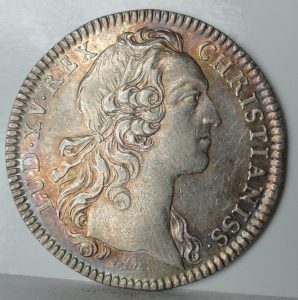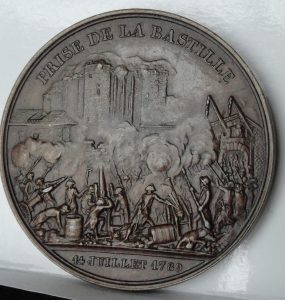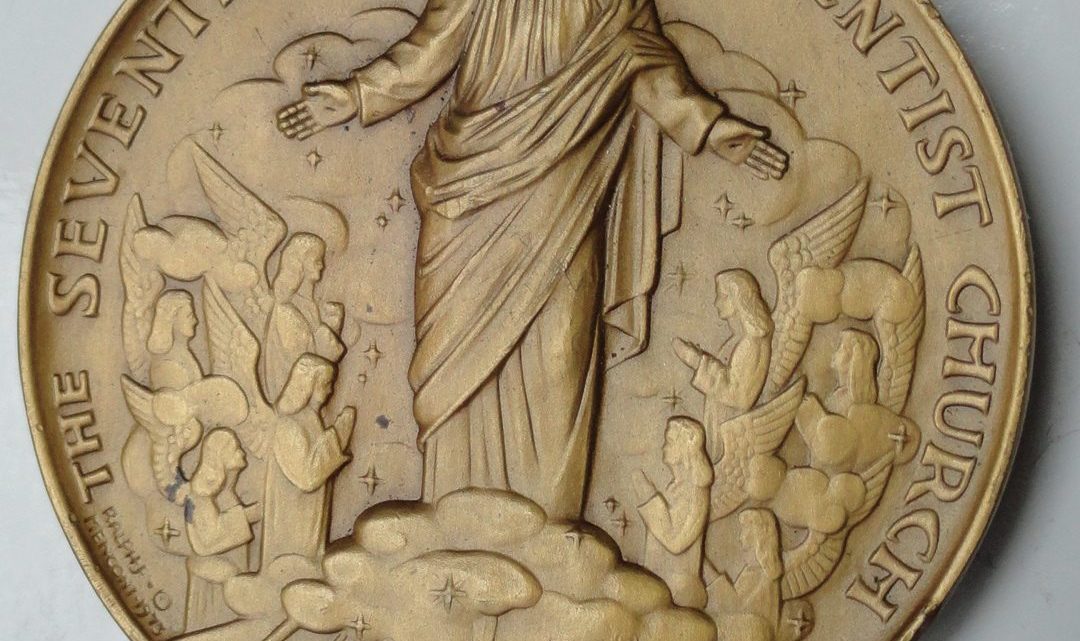As a dedicated numismatist (coin collector) and biblical student, I have long been interested in coins and medals that relate to stories in the Bible. Not only are coins tiny bits of political art that one can hold in their hand, Christ also told several insightful parables using coins as object lessons. Coins are one of the few physical objects that are still used the same way today as they have been for the past 2,400 years and thus are direct links to ancient times. So when I was one day reading The Great Controversy and ran across a reference Ellen White made to a specific papal medal, I knew I had to have that piece for my collection.
White noted in The Great Controversy, p. 273 that Pope Gregory XIII shamefully struck a medal (see photo below) to commemorate the so-called “Massacre of the Huguenots” in August 1572. The Huguenots were French Sabbath-keeping Protestants and that tragic day also became known as the St. Bartholomew’s Day Massacre. While no exact number of dead is known, it is believed over 20,000 martyrs were kill in Paris and as many as 100,000 throughout France.
The grisly ambush and massacre of tens of thousands of passive Christians caused a huge outcry across Europe and papal apologists were quick to claim and still hold the medal was not an official papal issue. But it was indeed, the first issued by Pope Gregory and part of the papal mindset that heresy can only be met with justifiable death.
Significantly, the medal’s imagery is filled with symbolism: a cross, sword, angel of death, papal regalia, etc. Coinage has always been the venue for conveying official governmental ‘truth’ by the use of symbols because even though the bulk of the audience may be illiterate, they could still instantly recognize the message being given. Many of these ancient symbols continue to be used in the present day; even our own American currency is full of symbolism.
Symbols, signs and seals
The Huguenot medal is now part of a unique assemblage of over 500 coins, medals, tokens and currency that portray the history of the Bible and the rise of the Christian (and Adventist!) Church as depicted on numismatic objects. Far more than just a collection of biblical-era coinage, the Great Controversy Collection (GCC) emphasizes the role of biblical prophesy as understood through the historical-critical method of interpretation.
Thus, there are time prophecies and events in the Bible that have a definite starting and ending point in world history and many of these are represented by coins and medals in the collection. These include such things a medal commemorating the Lisbon earthquake, one in memory of the fall of the stars in 1833 and of course, coins dated 1844 of which the collection contains examples from over 40 different countries, reflecting that prophetic events are transnational in fulfillment. One of the prides of the collection is a ‘twofer’, a medal struck in 1844 to commemorate the fall of the Bastille and imprisonment of the Pope in 1798. Two time prophecies in one medal!
The collection starts with several ancient coins. Most of the events in the Old Testament occurred prior to the invention of coinage in about 600 B.C. This is about the time of the Israel’s captivity in Babylon and the story of the giant idol in Daniel 2 is set against the backdrop of precious metals and the development of coinage. Babylon eventually had its own mint so one of the coins in the collection has a Babylon “mintmark.”
Prophecies and events
Biblically-related coins includes both those used and mentioned in the Bible, particularly the New Testament, but also coins that portray stories, events and personages mentioned in the Bible (Noah’s ark, Daniel in the lion’s den, Moses, etc.). The Reformation Period is rich in numismatic examples of this genre by some of the era’s most famous sculptors and metallic artists.
The Catholic Church also has a long numismatic history that includes the striking of coins, medals, bullae and seals. The Papal Mint has struck its own coinage for over a thousand years and continues to have its own coinage to this day. The GCC includes hundreds of items from over 40 different Popes with special emphasis on the symbolism on Sede Vacante (“empty throne”) coins struck between the time one pope died and another was elected. There are also over twenty different coins and medals of Pope Gregory XVI, the man who was Pope during 1844; his imagery is particularly intriguing.
Protestant coinage includes communion tokens, temperance medals, medals relating to the Sunday-School movement, and Bible and Missionary Society medals. The subject of the largest number of commemorative medals in the world is thought to be Martin Luther, who has literally hundreds of different medals struck in his honor, many of which are represented in the collection.
Adventist history represented
The Seventh-day Adventist church has even had numerous numismatic items struck over the years, both officially and unofficially. This includes an example of the official General Conference medal presented to the Pope by a past GC president as well as a bus token used by schoolchildren at Union College Academy in 1958. Even fringe groups are represented: the Shepherd’s Rod at Mt. Carmel, Waco, Texas made their own paper money and the Brimsmead family had a store in Australia that issued tokens in the 1850s. Small world!
I am in the process of creating a PowerPoint program about the Great Controversy Collection to use as a presentation to Adventist groups interested in ancient symbolism. My contact information is listed below:
Dr. Lawrence Lee
World Coins and Medals
402.488.2646












